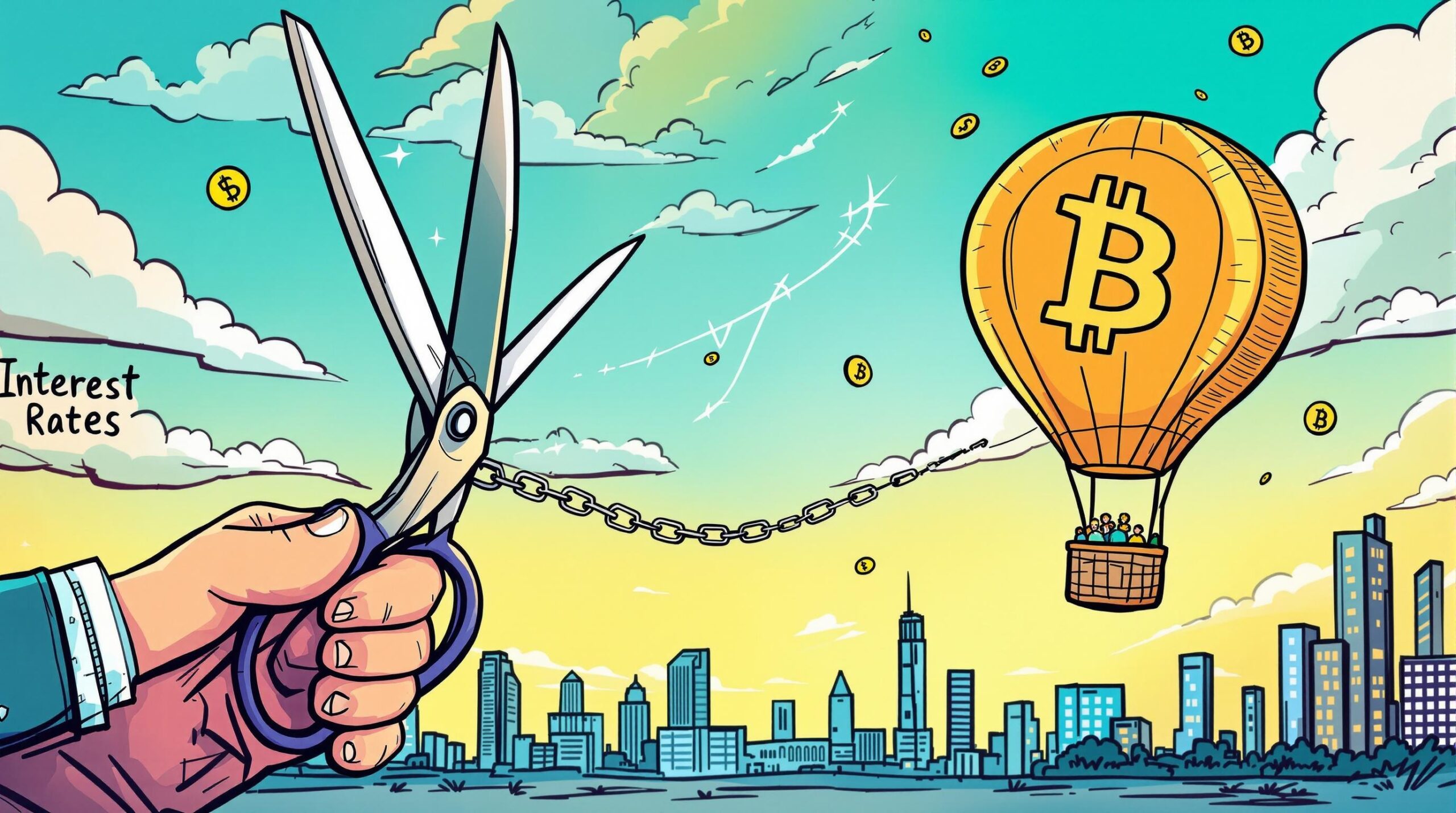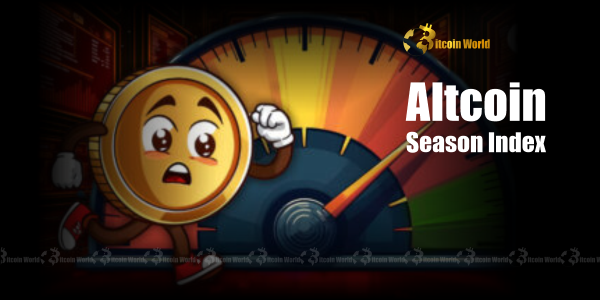BitcoinWorld

Interest Rate Cuts: Unlocking Crypto Market Potential in 2024?
The world of cryptocurrency is always buzzing with anticipation, and few topics generate as much discussion as the potential shifts in global monetary policy. For crypto enthusiasts and investors, the whispers of impending interest rate cuts from major economies, particularly the United States, carry significant weight. Why? Because these decisions by central banks can ripple through financial markets, influencing everything from bond yields to the volatile yet exciting realm of digital assets. Understanding these macroeconomic currents is not just for economists; it is crucial for anyone looking to navigate the often-unpredictable tides of the crypto market.
What Did U.S. Treasury Secretary Scott Bessent Say About Interest Rate Cuts?
Recently, the financial world turned its attention to a significant statement from a prominent figure: U.S. Treasury Secretary Scott Bessent. According to the widely followed Walter Bloomberg economic news account on X (formerly Twitter), Bessent indicated that the U.S. could realistically anticipate ‘one or two rate cuts’ this year. This declaration, coming from such a high-ranking economic official, is far more than a casual remark; it is a powerful signal that warrants close examination by anyone invested in or considering the crypto market.
Secretary Bessent’s insights are particularly relevant because he sits at the heart of U.S. economic policy. His perspective offers a glimpse into the administration’s thinking and expectations regarding the nation’s financial trajectory. When a Treasury Secretary speaks about interest rate cuts, it suggests that the underlying economic conditions—such as inflation trends, employment data, and overall economic growth—are being carefully evaluated, potentially paving the way for a shift in the Federal Reserve’s monetary stance. While the Federal Reserve operates independently, high-level government officials often have access to comprehensive economic data and forecasts that inform their public statements, making Bessent’s comments a key piece of the puzzle for market watchers.
Why Do Interest Rate Cuts Matter for the Crypto Market?
Understanding the intricate dance between traditional monetary policy and the decentralized world of cryptocurrency is crucial for any investor. Historically, there is an inverse relationship often observed: when interest rate cuts are on the horizon or enacted, riskier assets, including cryptocurrencies, tend to become more attractive. But what exactly drives this dynamic? Let’s break down the core mechanisms:
- Lower Borrowing Costs: When central banks reduce interest rates, the cost of borrowing money for businesses and consumers decreases. This encourages spending and investment, as capital becomes cheaper to acquire. More money flowing through the economy often finds its way into various asset classes, including those perceived as having higher growth potential.
- Increased Liquidity: Reduced interest rates typically lead to an expansion of the money supply and increased liquidity in the financial system. This abundance of capital seeks returns, and with lower yields on traditional ‘safe’ investments like savings accounts or government bonds, investors are often pushed towards assets that promise higher growth, even if they come with greater risk.
- Reduced Opportunity Cost: The opportunity cost of holding riskier assets like cryptocurrencies decreases when interest rates are low. If you can earn minimal returns from a bank savings account or a low-yield bond, the allure of potentially significant gains from crypto becomes stronger, making the trade-off more appealing for investors seeking better returns.
- Valuation of Growth Assets: Many crypto projects, particularly those focused on innovation and future technologies, are considered ‘growth assets.’ In a lower interest rate environment, the present value of future earnings or potential growth for these assets tends to increase. This is because the discount rate used to value future cash flows or potential market share is lower, making their long-term prospects appear more valuable today.
These factors collectively create an environment where the perceived risk-reward balance shifts in favor of growth-oriented and volatile assets, making the prospect of interest rate cuts a generally bullish signal for the cryptocurrency market.
Navigating the Economic Landscape: What are the Broader Implications of Rate Cuts?
While the direct impact on crypto is a major focus for our community, it is vital to zoom out and consider the broader economic implications of interest rate cuts. These decisions are not made in a vacuum; they reflect central banks’ assessment of economic health and their strategies to achieve stability and growth. A rate cut typically signals a desire to stimulate economic activity, combat potential slowdowns, or manage disinflationary pressures.
The Federal Reserve, the U.S. central bank, operates with a dual mandate: to achieve maximum employment and maintain price stability (i.e., control inflation). When inflation appears to be under control and/or employment figures show signs of softening, the Fed might consider cutting rates to prevent an economic downturn. Such a move can:
- Boost Consumer Spending: Lower interest rates on loans (mortgages, credit cards) can encourage consumers to spend more, stimulating demand.
- Encourage Business Investment: Companies find it cheaper to borrow for expansion, research, and development, leading to job creation and economic growth.
- Impact Traditional Markets: Stock markets often react positively to rate cut expectations as they imply lower borrowing costs for companies and potentially higher corporate profits. Bond yields, conversely, tend to fall.
However, the timing and magnitude of these cuts are heavily dependent on incoming economic data. The Fed constantly monitors inflation rates, employment reports, GDP growth, and global economic conditions to make its decisions. The market’s anticipation of these moves can sometimes be as impactful as the actual decisions themselves, leading to periods of heightened volatility as investors adjust their positions.
| Aspect | Potential Impact | Explanation |
|---|---|---|
| Liquidity | Increases | Lower interest rates make it cheaper to borrow money, leading to more capital flowing into the broader financial system, including risk assets like crypto. |
| Investor Appetite for Risk | Boosts | With lower returns on safer investments (like bonds or savings accounts), investors may seek higher yields in more volatile assets, such as cryptocurrencies. |
| Opportunity Cost of Holding Crypto | Decreases | The relative attractiveness of holding cash or low-yield assets diminishes, making the potential returns from crypto more appealing. |
| Valuation of Growth Assets | Positive | Many crypto projects are seen as long-duration growth assets. Lower discount rates (due to lower interest rates) can increase their present value. |
Historical Precedents: How Have Crypto Markets Reacted to Past Rate Cycles?
Looking back can often provide valuable insights into what might lie ahead. While the crypto market is relatively young compared to traditional asset classes, we have seen it react to various phases of monetary policy. During periods of aggressive rate hikes, such as those witnessed in 2022, risk assets, including crypto, generally faced significant headwinds. The tightening of monetary policy, aimed at curbing inflation, made borrowing more expensive and reduced overall market liquidity, leading to a ‘risk-off’ sentiment among investors.
Conversely, periods of monetary easing or anticipated interest rate cuts have often coincided with renewed investor confidence and upward price momentum. For instance, the bull run seen in late 2020 and 2021 occurred amidst an environment of ultra-low interest rates and quantitative easing, where central banks were actively injecting liquidity into the financial system. This created a fertile ground for risk assets to flourish, and cryptocurrencies benefited significantly from the surge in liquidity and investor appetite for higher returns.
It is important to remember, however, that correlation is not causation. While macroeconomic factors like interest rate cuts play a significant role, the crypto market is also influenced by its unique internal dynamics, including technological advancements, regulatory developments, institutional adoption, and specific project news. Therefore, while historical trends offer a useful framework, they should not be seen as a definitive predictor of future performance.
What Are the Potential Challenges and Headwinds to Rate Cuts?
While the prospect of interest rate cuts often brings optimism, it is crucial for any discerning investor to consider the potential challenges and headwinds. The path to monetary easing is rarely smooth, and unforeseen factors can always alter the trajectory or diminish the positive impact on risk assets.
- Inflation Persistence: If inflation proves to be more stubborn than anticipated, or if new inflationary pressures emerge (e.g., from supply chain disruptions or geopolitical events), central banks might delay or reduce the number of planned rate cuts. This could lead to market disappointment and a reassessment of risk assets.
- Economic Slowdown: Sometimes, interest rate cuts are enacted because the economy is weakening significantly. While cuts aim to stimulate growth, a severe economic downturn could still lead to overall market caution and a ‘flight to safety,’ even in a lower-rate environment. Investors might prioritize capital preservation over speculative gains.
- Geopolitical Instability: Major global events, such as conflicts or political crises, can overshadow economic policy decisions. Such events can trigger market volatility, disrupt supply chains, and create uncertainty that makes investors hesitant to embrace risk, regardless of interest rate movements.
- Regulatory Scrutiny in Crypto: The crypto market faces ongoing regulatory developments across the globe. New regulations, enforcement actions, or shifts in government stance could introduce significant headwinds that are independent of macroeconomic policy, affecting market sentiment and adoption.
- Unexpected Data: The Federal Reserve’s decisions are data-dependent. Any unexpected shifts in key economic indicators—like a sudden surge in unemployment or an unexpected rise in core inflation—could prompt the Fed to adjust its plans for rate cuts, leading to market re-pricing.
These factors highlight the complexity of forecasting market movements based solely on monetary policy. A holistic view, incorporating a range of economic, political, and industry-specific considerations, is essential.
Actionable Insights for the Savvy Crypto Investor
Given the evolving economic landscape and the potential for interest rate cuts, how can you best position yourself in the dynamic crypto market? While this is not financial advice, here are some actionable insights to consider as you formulate your strategy:
- Stay Informed and Adaptable: Continuously monitor official announcements from central banks (especially the Federal Reserve), key economic data releases (inflation, employment), and expert analyses. The market reacts swiftly to new information, so being well-informed allows for quicker adaptation.
- Understand the Nuances: Recognize that not all cryptocurrencies will react in the same way to macroeconomic shifts. Bitcoin, often seen as a ‘digital gold’ or macro asset, might respond differently than smaller altcoins or DeFi tokens. Research specific projects and their fundamentals.
- Practice Risk Management: Only invest what you can comfortably afford to lose. Given crypto’s inherent volatility, even in a favorable macro environment, capital preservation should be a priority. Consider setting stop-loss orders or taking profits at predetermined levels.
- Diversification: Avoid putting all your digital eggs in one basket. Diversifying your crypto portfolio across different asset classes (e.g., Bitcoin, Ethereum, stablecoins, DeFi tokens, NFTs) and even traditional assets can help mitigate risk during periods of uncertainty.
- Consider Dollar-Cost Averaging (DCA): Instead of making a large lump-sum investment, consider investing a fixed amount regularly, regardless of price fluctuations. DCA can help smooth out volatility and reduce the impact of short-term price swings, making you less susceptible to market timing errors.
- Long-Term Perspective: Focus on the long-term potential of blockchain technology and specific projects rather than getting caught up in daily price movements. Macroeconomic cycles come and go, but foundational technological advancements can drive sustained growth over years.
By adopting a disciplined approach and integrating macroeconomic awareness into your investment framework, you can better navigate the opportunities and challenges presented by potential interest rate cuts.
The potential for one or two interest rate cuts in 2024, as suggested by U.S. Treasury Secretary Scott Bessent, undoubtedly introduces a fascinating dynamic for the cryptocurrency market. While lower rates could inject fresh liquidity and boost investor appetite for risk, the broader economic context, including inflation, employment data, and geopolitical stability, will continue to shape the narrative. For those navigating the exciting world of digital assets, staying informed, understanding the macroeconomic currents, and adopting a well-thought-out strategy will be paramount. The future remains uncertain, but opportunities often emerge from periods of significant change, making this an exciting time to be involved in the crypto space.
Frequently Asked Questions (FAQs)
1. What is the primary impact of interest rate cuts on financial markets?
The primary impact of interest rate cuts is to stimulate economic activity by making borrowing cheaper. This encourages consumer spending and business investment, which can lead to increased liquidity in the financial system and often boosts stock markets and other risk assets, as investors seek higher returns than those offered by traditional low-yield savings or bonds.
2. How might interest rate cuts specifically affect Bitcoin and other cryptocurrencies?
Historically, interest rate cuts tend to make riskier assets like Bitcoin and other cryptocurrencies more attractive. Lower rates reduce the opportunity cost of holding volatile assets, increase overall market liquidity, and can lead to capital flowing into digital assets in search of higher yields compared to traditional low-return investments.
3. Are interest rate cuts guaranteed this year, according to Scott Bessent?
U.S. Treasury Secretary Scott Bessent indicated that ‘one or two rate cuts’ are a realistic expectation for this year. However, this is an expectation based on current economic forecasts, not a guarantee. The Federal Reserve’s decisions are data-dependent and can change based on evolving inflation, employment, and broader economic conditions.
4. What other factors, besides interest rates, influence crypto prices?
Besides interest rate cuts and broader macroeconomic trends, crypto prices are influenced by a multitude of factors. These include regulatory developments, technological advancements within blockchain projects, institutional adoption, network upgrades (like Bitcoin halvings or Ethereum’s Merge), market sentiment, geopolitical events, and the overall supply and demand dynamics of individual cryptocurrencies.
5. Should I change my crypto investment strategy based on potential rate cuts?
While potential interest rate cuts can be a positive macroeconomic tailwind for crypto, it is generally advisable to maintain a well-researched and disciplined investment strategy rather than making drastic changes based solely on a single factor. Consider diversifying your portfolio, managing risk, and focusing on long-term fundamentals rather than short-term speculation. Always consult with a financial advisor for personalized advice.
6. What is the Federal Reserve’s role in setting interest rates?
The Federal Reserve (the Fed) is the central bank of the United States and is responsible for setting the federal funds rate, which influences other interest rates throughout the economy. Its decisions are guided by a dual mandate: to achieve maximum sustainable employment and to maintain stable prices (control inflation). The Fed uses interest rates as a key tool to manage economic growth and stability.
Did you find this deep dive into interest rate cuts and their potential impact on crypto insightful? Share this article with your friends, fellow investors, and on your social media channels to help spread awareness and foster informed discussions within the crypto community!
To learn more about the latest crypto market trends, explore our article on key developments shaping Bitcoin and Ethereum price action.
This post Interest Rate Cuts: Unlocking Crypto Market Potential in 2024? first appeared on BitcoinWorld and is written by Editorial Team





